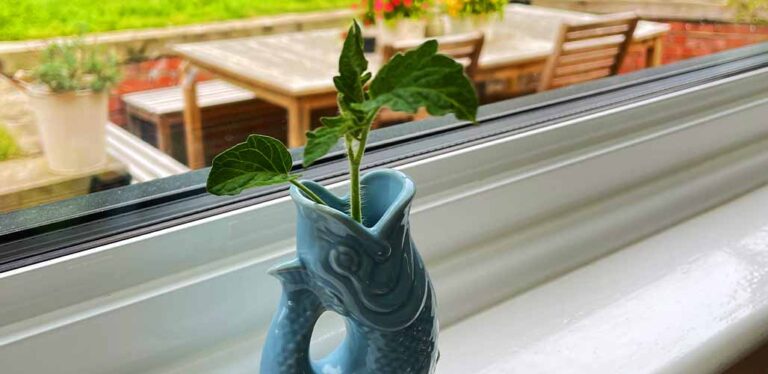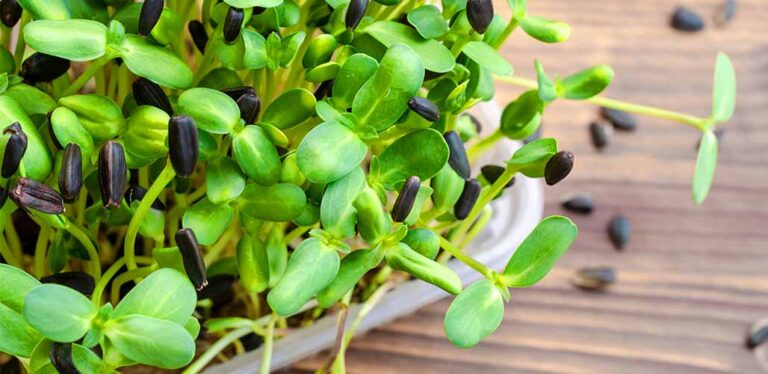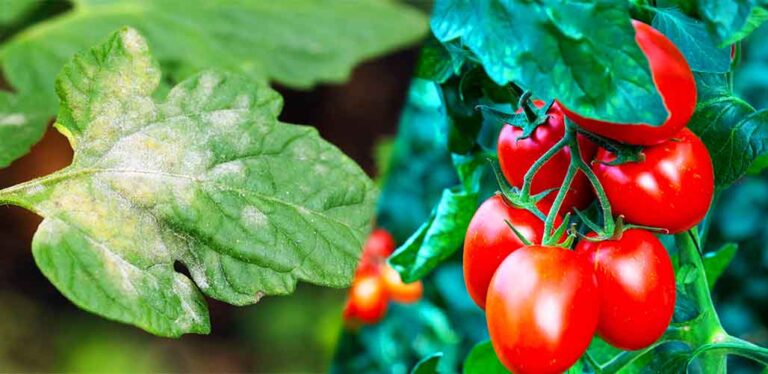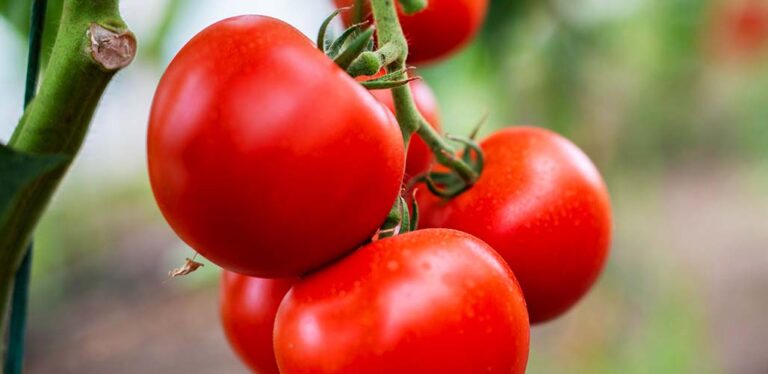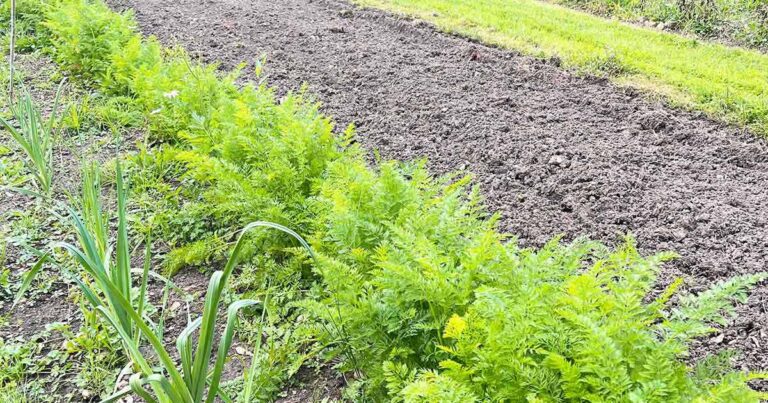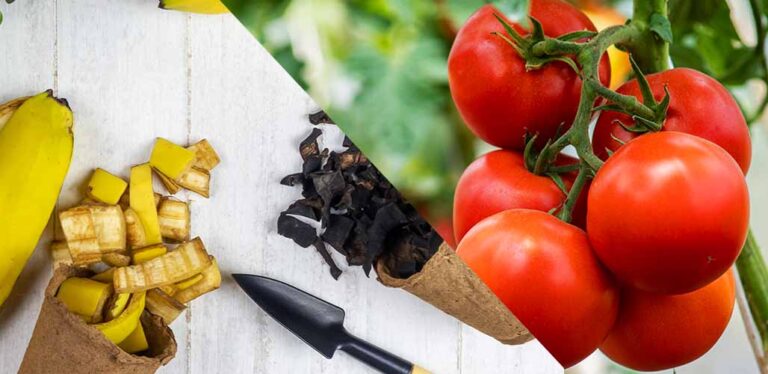Why Are My Cucumber Leaves Turning Yellow?

Cucumber leaves turning yellow is a signal that your cucumber plant needs a bit of help to get back to full health. Yellowing leaves on cucumber plants are usually your first sign that they’re underfed, diseased, or being prey upon by parasites. Some of these problems can be cured easily, but unfortunately others can only be chalked up to experience. This cucumber care guide answers one of the most common growing questions – why are my cucumber leaves turning yellow, and how do I get them back to green?
Contents
- Cucumbers 101
- Ingredients for happy cucumbers
- Why are my cucumber leaves turning yellow?
- Environmental factors that turn cucumber leaves yellow
- Diseases that result in cucumber leaves turning yellow
- Pests that cause yellow spots on cucumber leaves
- Fixing yellow cucumber leaves turning yellow
- Preventing more yellow cucumber leaves in future
Cucumber plant leaves turning yellow is a common problem for outdoor and greenhouse-raised vines. Let’s see what it means, and how to fix it.
Cucumbers 101
Cucumbers belong to the same botanical family as squash, zucchini and melons, collectively known as cucurbits. Cucumber plants are long trailing vines with yellow flowers. They are annuals, which means new plants are grown from seed every year in the spring, and they die completely following the first frosts. They have been cultivated for at least 3,000 years, starting in Asia and steadily spreading across the globe. Today, 91 million tonnes of cucumbers are grown every year, and most of the cucumbers consumed in America are imported from Mexico. Starting to grow your own cucumbers is a fun, fast and satisfying way to have a whole summer’s supply of fresh and tasty cukes by your own back door.
Ingredients for happy cucumbers
Here are the key ingredients for growing happy, healthy cucumber plants:
- A minimum temperature of 68-70f (20-21c). Cucumber plants can be grown in USDA hardiness zones 4-12. Growing your vines in a heated or unheated greenhouse extends the length of the growing season in colder areas and maximizes how many fruits you get.
- Rich, loamy soil. Cucumber vines are famously hungry and need soil with lots of nutrients. Loamy means having an equal balance of sand, clay, and broken down plant matter. Poor soils can be enriched with compost or manure, or alternatively vines can be grown in containers.
- 6 to 8 hours of sunshine a day. Cucumbers like a lot of light, but they also scorch easily, so lightly dappled shade or an east-facing site are ideal for supplying that perfect balance.
- Consistently moist soil. Cucumber vines need soil that is consistently and evenly damp. They don’t tolerate drying right out or being waterlogged.
- Something to climb up. Cucumber plants produce long, vertical tendrils which find a higher support and tighten around it to haul the vine up towards the sun. Popular supports include bamboo canes, netting and repurposed wooden pallets.
Why are my cucumber leaves turning yellow?
Cucumber leaves are triangular with a bristly surface and serrated edges. Healthy leaves are vivid emerald green, and yellowing cucumber leaves are a sign that all is not well for your plant. Since unhappy plants produce less fruit or none at all, identifying the problem and putting it right could save your harvest from extinction! Since there are several possible explanations for your cucumber’s yellowing leaves, the next section will help you identify which applies, by a process of elimination.
Environmental factors that turn cucumber leaves yellow
Are your cucumber leaves yellowing gradually all over? Then the problem is likely to be environmental. As previously mentioned, cucumber plants are notoriously greedy, and need very rich soil. In particular, they need lots of nitrogen in order to produce chlorophyll in their leaves. The production of chlorophyll traps the sun’s light so that it can be turned into usable energy for the plant, by a process known as photosynthesis. Cucumber plants also need a ready supply of phosphorus for storing the energy harnessed by photosynthesis, and potassium, which regulates the rate of both photosynthesis and fruit ripening.
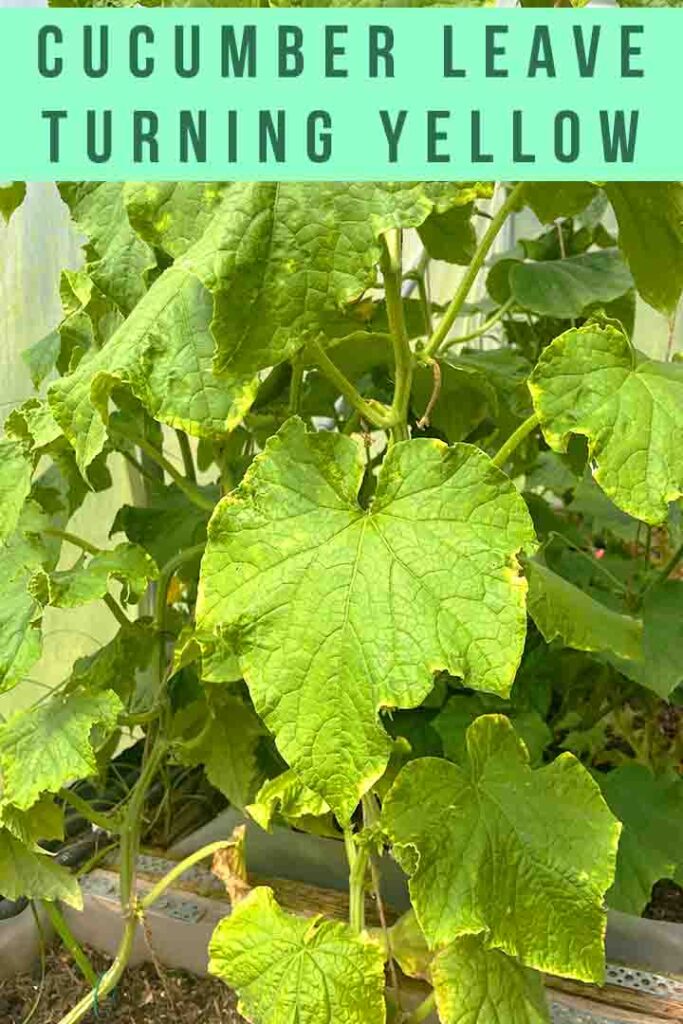
If your cucumbers are growing in a pot and their leaves are turning yellow, it’s likely to be because they have depleted the finite amount of nutrients available to them. This is particularly a problem for seedlings kept too long in the pot they were sown in, and for adult vines planted in a too-small pot. Cucumber vines in the ground turning yellow are likely to be the result of poor quality soil.
Cucumber leaves turning yellow gradually all over could also be a sign that they’re not getting enough sunlight. Healthy cucumber leaves are green because they contain lots of chlorophyll, formed by trapping the energy from sunlight. If your plants get less than 6 hours of sunlight a day, chlorophyll production will drop, and the leaves will start fading to yellow. When this happens, it means the plant isn’t trapping enough energy to make flowers or fruit either.
Diseases that result in cucumbers turning yellow
The next possibility to consider is the presence of a disease that causes yellowing leaves. The two main culprits in cucumbers are:
- Cucumber mosaic virus. If your cucumber’s leaves are mottled green and yellow, and the yellow patches follow the pattern of veins in the leaves, then it’s likely you’re looking at cucumber mosaic virus. Cucumber mosaic virus is spread by aphids and as well as discoloring leaves it also stunts flowering. Any fruits which are produced are deformed and inedible.
- Fusarium wilt. Fusarium wilt is a fungal infection that lives in the soil. When it infects plants, the leaves wilt rapidly, and depending on the conditions they might also turn yellow.
Pests that cause yellow spots on cucumber leaves
Finally, are your cucumber’s leaves speckled with tiny yellow spots? Then it could be a pest preying on your plants. Spider mites, aphids and whitefly all live and lay eggs on the underside of cucumber leaves. They slurp sap from puncture wounds in the leaves, resulting in white or yellow speckled scarring visible on the upper surface. If you turn an affected leaf over, you’ll spot the offending bugs. But watch out if your squeamish – spider mites and aphids will probably stay where they are, but whiteflies will fly up when disturbed!
Fixing yellow cucumber leaves
Hopefully now you’re feeling confident that you know why your cucumber leaves are turning yellow. Now let’s look at if and how you can turn them back to green.
For underfed plants, there is a simple solution: start feeding them once a fortnight with a general purpose fertilizer. General purpose fertilizers have a balance of nitrogen for healthy foliage, as well as phosphorus and potassium for healthy fruit.
If you think your cucumber is being shaded out by a wall, fence or other plants, consider moving them to another spot. If they’re planted in the ground, then moving them is likely to stress them and possibly kill them, so you can consider judiciously pruning the plants above them, but you might just need to write off the cucumbers and chalk it up to experience for this year. Depending on how far through the growing season you are, you could buy young plants to start afresh with.
Unfortunately, plants with cucumber mosaic virus or fusarium wilt are unsalvageable. Affected plants need to be dug up and destroyed – don’t add them to the compost heap!
Pests can be treated in several ways. There are chemical insecticides suitable for killing aphids, whitefly and red mites. For organic gardeners, all three species can be contained using biological controls. This means buying live insects from specialist stores or online retailers to release around your cucumbers, which will eat the pest species. The biological controls for cucumber pests are:
- Ladybugs to gobble up the aphids.
- Predatory mites called Phytoseiulus persimilis to eat spider mites.
- And parasitic wasps called Encarsia formosa to destroy white fly.
White fly can also be caught using sticky traps.
Preventing more yellow cucumber leaves in future
Prevention, as they say, is better than cure. Keeping your cucumbers green in the first place means more crops in the long run. If yellowing cucumber leaves are a recurring problem for you, here’s how to avoid it in the first place next time.
- Grow disease resistant varieties. Such as Dasher II.
- Prepare the soil before planting. For example by digging in well rotted compost or manure. Starting plants out in rich soil means you won’t spend the growing season on the back foot, trying to compensate for inadequate nutrition later.
- Space them out. The more cucumber vines have to compete for light, water and food, the more stressed and prone to problems they’ll be. Plant seedlings 30 inches apart in open soil, or use a minimum 2 gallon pot per plant.
- Water consistently from below. The easiest way to do this with vines in pots is by standing the pot in a drip tray and watering the tray, not the surface of the soil. For plants outside, take a look at ollas – clay pots for submerging in the soil and watering into. Keeping the surface of the soil dry suppresses fungal infections.
- Prune! The bigger a plant gets, the more it will be stressed by changes in availability of food and water. Snip out the growing tip of the plant when it reaches the top of the support, and snip the tips off side shoots two leaves beyond the first fruit, or after 2 feet if they don’t produce a fruit by then. This will also encourage the vine to put energy into making better cucumbers for you.
Why are my cucumber leaves turning yellow?
Several things can cause cucumber leaves to turn yellow. Gradual, even, color fading is usually caused by lack of food, or lack of sunlight. Patchy yellow and green mottling is caused by the cucumber mosaic virus, and leaves that are yellow and wilted may have fusarium wilt. Yellow speckles generally mean there is a pesky bug living on the underside of the leaf. Underfed plants and plants with pests can often be saved if you act quickly, but diseased plants and outdoor plants in the wrong place usually need to be replaced.
Do you have any growing tips for healthy cucumber plants? Please share them in the comments box down below!
More growing guides for cucumbers
- Help with hardening off cucumber seedlings
- Treating sunburn on cucumbers
- Can you eat deformed cucumber fruits?
- What can you do with cucumber flowers?
References
- Buckingham. Allotment Month By Month. Dorling Kindersley Limited. 2009.
- Gerbode. How the Cucumber Tendril Coils and Overwinds. Science. 2012.
- Jacquemonde. Cucumber Mosaic Virus. Advances in Virus Research. 2012.
- Marshall. The Greenhouse Gardener’s Manual. Timber Press. 2014.
- Royal Horticultural Society.
- USDA Hardiness Zone Maps of the United States. OSU College of Agricultural Sciences. Accessed June 2022.

